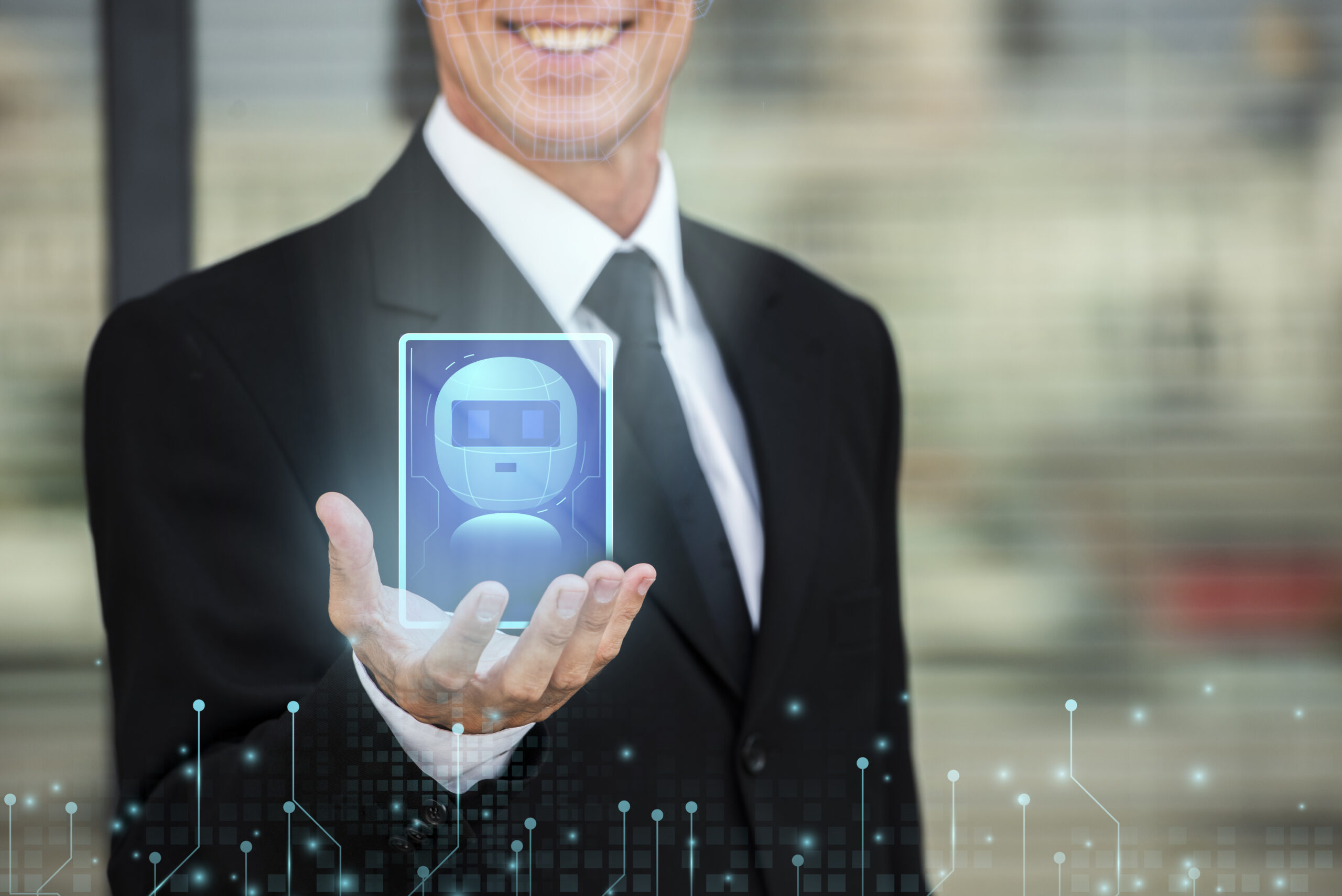
In today’s digital age, high-tech touchpoints are revolutionizing the way customers interact with businesses, shaping a new era of customer experience. These advanced touchpoints, from AI chatbots to personalized recommendations, are enhancing customer satisfaction and loyalty like never before. As technology continues to evolve rapidly, companies must adapt and leverage these innovations to stay competitive in the market. This shift towards high-tech touchpoints marks a significant turning point in how brands engage with their audience, offering more personalized and efficient solutions that cater to modern consumer preferences.
Table of Contents
Evolution of Customer Experience
From Traditional to Digital
Customer touchpoints have evolved from traditional brick-and-mortar stores to digital channels like websites and mobile apps. The shift towards digital platforms has transformed how businesses interact with their customers. Today, customers expect seamless experiences across various digital touchpoints.
The transition to digital touchpoints has revolutionized customer interactions by providing convenience and accessibility. Businesses can now engage with customers through multiple channels, offering personalized experiences based on their behavior and preferences. This shift reflects the changing landscape of customer behavior towards online platforms.
Impact of Technology
Technology plays a significant role in enhancing customer experience by streamlining processes and improving efficiency. Advancements in technology have reshaped customer touchpoints, making them more interactive and user-friendly. Businesses leverage technology to provide real-time support and personalized recommendations to enhance customer satisfaction.
Technological innovations have revolutionized the way businesses engage with customers, creating opportunities for enhanced communication and engagement. By integrating AI and data analytics into customer touchpoints, companies can anticipate customer needs and deliver tailored solutions. This transformation underscores the importance of technology in driving customer-centric strategies.
Future Trends
Future trends in high-tech touchpoints are set to redefine the landscape of customer experience. The integration of AI and IoT technologies will play a pivotal role in transforming customer touchpoints into intelligent interfaces that anticipate and fulfill customer needs. Personalization will be at the forefront of these futuristic touchpoint technologies, offering tailored experiences that resonate with individual preferences.
The future of high-tech touchpoints lies in creating seamless, omnichannel experiences that bridge the gap between online and offline interactions. By harnessing the power of data analytics and artificial intelligence, businesses can deliver hyper-personalized experiences that cater to each customer’s unique journey. Embracing these upcoming trends will be essential for companies looking to stay ahead in an increasingly competitive market.
Defining High-Tech Touchpoints
Types of Touchpoints
High-tech touchpoints encompass a wide array of online, offline, mobile, and social media platforms. These touchpoints serve as vital channels for customer interaction and engagement. By leveraging online touchpoints, businesses can reach a global audience effortlessly.

Physical touchpoints, such as in-store kiosks, offer customers a tangible experience, while digital touchpoints like websites provide convenience and accessibility. The integration of various touchpoints is crucial in creating a seamless omnichannel experience for customers. This approach ensures consistency across all platforms, enhancing the overall customer journey.
Importance in CX
High-tech touchpoints play a pivotal role in delivering an exceptional customer experience. Optimized touchpoints cater to individual preferences, leading to enhanced customer satisfaction. By utilizing high-tech touchpoints effectively, businesses can foster customer loyalty and retention.
Effective touchpoints contribute significantly to increased customer satisfaction levels. Customers value personalized interactions through various touchpoints, reinforcing their connection with the brand. A well-designed omnichannel strategy that incorporates high-tech touchpoints can elevate the overall customer experience.
AI and Personalization
Chatbots
Chatbots serve as interactive touchpoints for customer support, streamlining inquiries and providing instant responses. Their efficiency lies in enhancing customer service experiences by offering quick solutions.
- Benefits of chatbots: Instant responses, 24/7 availability, consistent service quality.
- Efficiency in streamlining inquiries: Reducing response time, handling multiple queries simultaneously.
- Enhancing customer service experiences: Personalized interactions, resolving issues promptly.
Recommendation Engines
Recommendation engines personalize customer touchpoints based on preferences, utilizing AI algorithms to drive tailored experiences. They significantly impact customer engagement by suggesting relevant products or services.
- Personalization based on preferences: Tailoring recommendations to individual needs and interests.
- Role of AI algorithms: Analyzing data to understand customer behavior and deliver accurate suggestions.
- Increasing customer engagement: Encouraging repeat purchases, improving user experience through tailored recommendations.
Augmented and Virtual Reality
Immersive Shopping
Immerse customers in augmented reality and virtual reality to transform their retail experience. These technologies redefine customer touchpoints by allowing interactive engagement with products. Imagine trying on clothes virtually from the comfort of your home.

Step into a world where customers can visualize furniture in their living rooms before making a purchase decision. Augmented reality overlays digital information onto the physical environment, enhancing the way people shop. This immersive shopping experience revolutionizes customer interactions with products.
Incorporating virtual reality into the retail sector offers customers an unparalleled shopping journey. Picture exploring a virtual store, browsing through items, and even receiving personalized recommendations based on preferences. The potential for immersive shopping to shape the future of retail is vast.
Virtual Try-Ons
Experience the convenience of virtual try-ons, transforming how customers engage with fashion and beauty products. These interactive touchpoints allow individuals to virtually try on various outfits or makeup looks. Say goodbye to fitting room queues and hello to instant virtual trials.
Personalize the shopping experience for customers by enabling them to virtually test different styles, colors, and sizes. Virtual try-ons cater to individual preferences, ensuring a tailored approach to shopping that boosts customer satisfaction. It’s like having a personal stylist at your fingertips.
Reduce product returns and boost sales through virtual try-ons that empower customers to make informed decisions confidently. By visualizing how products look or fit before purchasing, shoppers feel more confident about their choices. The impact of these interactive touchpoints extends beyond just convenience.
IoT and Smart Devices
Smart Homes
Smart home devices act as touchpoints for connected customer experiences, seamlessly integrating technology into daily life. Voice assistants like Amazon’s Alexa or Google Assistant enhance touchpoints within smart homes by providing hands-free control over various devices. The integration of IoT devices in smart homes offers convenience and efficiency, allowing users to manage tasks effortlessly.
- Smart home devices streamline daily routines
- Voice assistants improve user interactions with IoT devices
Wearable Tech
Wearable technology serves as personalized touchpoints for health and fitness tracking, offering users real-time insights into their well-being. These devices enhance customer experiences by providing constant monitoring of vital signs and activity levels. The potential of wearable tech lies in creating seamless touchpoints that cater to the individual needs of users.
- Wearable devices offer personalized health insights
- Real-time data monitoring enhances user experience
Blockchain for Transparency
Supply Chain Visibility
Supply chain visibility plays a crucial role as a touchpoint for transparency in product delivery. Real-time tracking and monitoring enable businesses to provide customers with accurate information regarding their orders. This transparency helps in building trust by allowing customers to track their products from production to delivery.

Enhancing customer satisfaction is directly impacted by supply chain visibility. When customers can track their orders, they feel more involved in the process, leading to increased trust and loyalty towards the brand. For example, companies like Amazon have implemented advanced tracking systems that allow customers to monitor their packages at every stage of the delivery process.
Secure Transactions
Secure transactions serve as essential touchpoints for building trust with customers. Encryption and authentication technologies ensure that customer payment information remains safe during online transactions. These security measures create a sense of reliability and protect sensitive data from potential cyber threats.
Big Data Analytics
Predictive Customer Service
Predictive analytics enhances customer experiences by anticipating needs and improving touchpoints efficiently. By analyzing data, companies can predict issues before they arise, leading to enhanced customer satisfaction. Response times are optimized through predictive customer service, ensuring quick solutions to problems. Personalization is key in today’s market, and predictive analytics enables tailored interactions based on individual preferences. Data-driven insights play a crucial role in proactively optimizing touchpoints for maximum impact.
Tailored Marketing Strategies
Tailored marketing strategies play a pivotal role in creating personalized touchpoints that resonate with customers. Through data-driven marketing, companies can segment their audience effectively and target them with relevant content. This approach not only improves customer engagement but also boosts conversion rates significantly. The impact of personalized content cannot be overstated, as it fosters a deeper connection between the brand and the customer.
Mobile Technologies
Apps and Wallets
Mobile technologies have revolutionized customer experiences through new technologies like mobile apps and digital wallets. These touchpoints offer seamless transactions, enhancing convenience for users. With the rise of mobile payment solutions, companies are focusing on improving customer checkout experiences. The security features embedded in these apps ensure safe transactions, while user-friendly interfaces make interactions smooth.
Location-Based Services (LBS) play a crucial role in personalizing customer touchpoints by leveraging geographic data. By utilizing LBS, organizations can tailor promotions and notifications based on customers’ locations. This targeted approach not only boosts engagement but also increases the likelihood of conversion. Geofencing and beacon technology further enhance location-based services by providing real-time, hyper-localized interactions.
Location-Based Services
Mobile applications and digital wallets serve as key touchpoints for modern businesses to interact with customers seamlessly. They offer advanced functionalities such as secure transactions and personalized services. Companies leverage these tools to create a more engaging and efficient checkout process for their customers.
The integration of location-based services into mobile technologies allows businesses to deliver targeted promotions based on users’ geographical data. By analyzing location information, organizations can send relevant offers and notifications to customers when they are in proximity to specific stores or venues. This personalized approach enhances the overall customer experience and drives higher levels of engagement.
- Pros:
- Enhanced convenience for users
- Improved security features for transactions
- Personalized promotions based on location data
- Cons:
- Dependency on GPS accuracy
- Privacy concerns related to location tracking
- Implement robust security measures in mobile apps and digital wallets.
- Utilize geofencing technology effectively to target customers based on their physical locations.
- Regularly update mobile applications to provide users with the latest features and enhancements.
Social Media Integration
Direct Engagement
Direct engagement touchpoints play a crucial role in fostering strong relationships with customers. By utilizing personalized communication channels, businesses can create meaningful interactions with their audience. This direct approach enhances customer satisfaction and loyalty.
User-generated content serves as authentic touchpoints for gathering customer feedback and reviews. Customers trust the opinions of their peers more than traditional marketing messages. Leveraging user-generated content helps in building brand credibility and establishing social proof.
Direct engagement touchpoints not only boost customer loyalty but also drive brand advocacy. When customers feel valued through personalized interactions, they are more likely to recommend the brand to others. This word-of-mouth marketing is a powerful tool for attracting new customers.
User-generated content, such as reviews and testimonials, significantly influences purchasing decisions. Potential customers rely on the experiences shared by existing users to make informed choices. Positive ratings and testimonials act as persuasive touchpoints that sway consumer behavior towards making a purchase.
User-Generated Content
Personalized communication channels enable businesses to engage with customers on a one-on-one level, fostering stronger connections. By tailoring messages to individual preferences, companies can create a more personalized experience for their audience.
User-generated content provides an avenue for authentic feedback that resonates with potential customers. Through reviews, comments, and social media posts created by users, brands can showcase real-life experiences and build trust among their target audience.

Direct engagement touchpoints allow brands to gather valuable insights from customers, enabling them to tailor their products or services based on feedback received. This continuous loop of communication helps in improving overall customer satisfaction and driving business growth.
User-generated content contributes to brand authenticity by showcasing genuine experiences shared by real customers. This transparency builds trust and credibility among consumers, leading to increased brand loyalty and positive brand perception in the market.
Closing Thoughts
You’ve explored how high-tech touchpoints are revolutionizing customer experience. From AI-driven personalization to the transparency of blockchain, these advancements are reshaping interactions with brands. Embracing these technologies can help your business stay ahead in the competitive market landscape.
Incorporate these high-tech touchpoints strategically to enhance customer engagement and loyalty. By leveraging AI, AR, IoT, and data analytics, you can create tailored experiences that resonate with your audience. Stay updated on emerging technologies and adapt them to meet evolving customer expectations. Start implementing these innovations today to elevate your customer experience and drive business growth.
Related Article:
Featured Image by freepik
